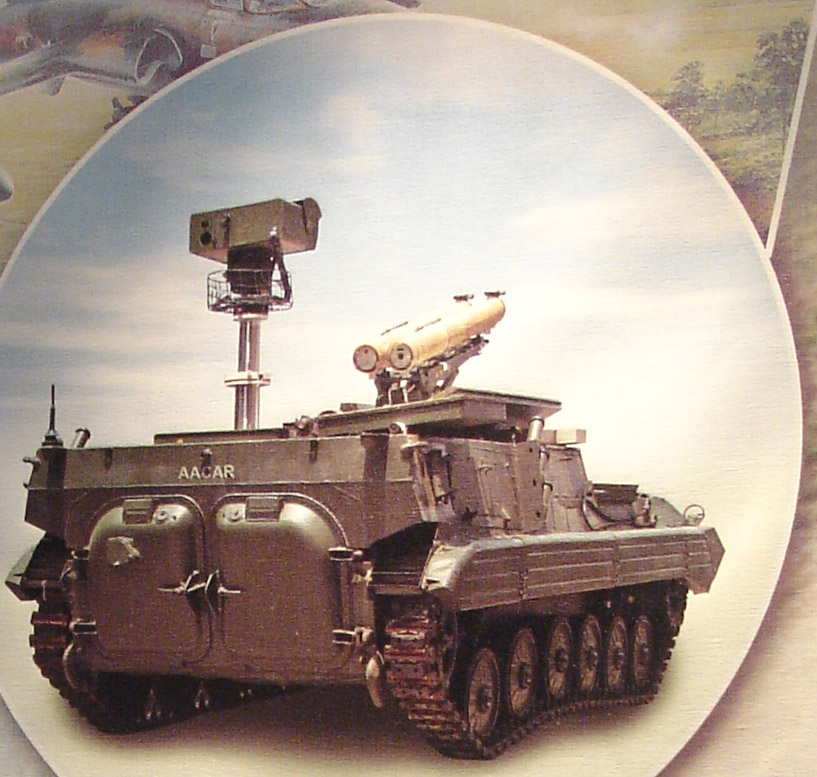Indian Army and DRDO co-operate to boost tank-killer Nag missile
The defence ministry's (MoD's) ambitious project to develop a world-class tank-killer missile has run into unanticipated trouble. But, encouragingly, instead of the customary blame game between the Army and the development agency—the Defence Reserach & Development Organisation (DRDO)—there is cooperation and a joint effort to overcome the problem.
The problem with the DRDO's anti-tank guided missile (ATGM), christened the Nag (Hindi for cobra), is its range. For most of the day and night, the Nag unerringly strikes its targets out to four kilometres, the range that the army demands. But in extreme heat, especially in summer afternoons in the desert, the missile cannot pick up targets beyond 2.5 kilometres. Once the temperature cools, the Nag's seeker differentiates again between the target and surrounding objects (or ground clutter).
Dr Avinash Chander, the DRDO's missile chief, told Business Standard, "Even in the worst conditions, the Nag is 100 per cent accurate out to 2.5 kilometres. Except when the temperature is really high, it is also accurate at four kilometres. By the year-end, we will develop a seeker with higher resolution, which will be accurate at four kilometres in any conditions."
The DRDO's unusual frankness in admitting a problem has been matched by the Army's unusual helpfulness in working through it. The Army has decided to buy 13 Nag carriers (NAMICA, being developed by BEL and L&T), and 443 Nag missiles in the current state. These will be deployed in areas like Punjab, where close-set villages, groves and electricity transmission cables seldom permit visibility beyond 2.5 kilometres. When the DRDO demonstrates improved performance with a better seeker, a larger order will follow.
"This is a top-class missile in every respect except for this problem. While we must have a range of four kilometres for the open desert, the reduced 2.5 kilometre range is acceptable for developed terrain like the Punjab. We will buy 13 Nag carriers and use these to familiarise ourselves with the system. And, in Phase II, we will order the four kilometre missile in bulk quantities," says a top general who decides such contracts.
For the Army, the delay is a disappointment. Indian infantry formations badly need a potent ATGM to handle Pakistani tank forces that now bristle with capable Ukrainian T-80 and Chinese T-85 tanks. As far back as 2010-11, the Army had budgeted Rs 335 crore for the first batch of Nag missiles.
The DRDO, for whom this is a prestigious project, says that the Hyderabad-based laboratory, Research Centre Imarat (RCI), will soon develop a seeker that can work through the hottest desert temperatures. This will feature an improved Focal Plane Array (FPA), a detector on the missile tip that picks up the target's infrared signal. Since the DRDO's own FPA programme is still at an early stage, the Nag's improved FPA will be supplied by French company, Sofradir. RCI will integrate Sofradir's FPA into an improved Nag seeker.
A third generation ATGM like the Nag is amongst the most complex land systems. Here's how it works. The Nag missile pilots scan the battlefield for enemy tanks with thermal imaging telescopes, which picks up targets by day or night with equal facility. Having picking up an enemy tank, the Nag pilot locks the seeker onto it. Immediately, a digital snapshot of the target is taken, which serves as a reference image. As the Nag streaks towards the target, at 230 metres per second, the seeker takes repeated snapshots of the target; each one is compared with the previous image. The deviations are translated into corrections to the Nag's control fins, which autonomously steer the missile onto the target. This is termed a "fire-and-forget" missile, relieving the pilot of the need to expose himself to enemy fire after launching the missile.
The world has just a handful of "fire-and-forget" missiles, such as the FGM-148 Javelin, built by American companies, Lockheed Martin and Raytheon; and the Spike, built by Israel's Rafael Advanced Defense Systems. The Javelin and the Spike are lighter, "man-portable" missiles that can be carried by an infantry soldier; the Nag is a heavier and more powerful missile that operates from vehicles and helicopters.
But the Nag's weight is turning out to be a problem. The Army is unhappy that the missile has weighed in at 40 kilos, instead of the 30-35 kilos that the Army had specified. This, senior officers say, makes reloading difficult. The DRDO has been asked to make it lighter.
The DRDO, however, argues that weight should not be an issue since it the Nag is carried on, and fired from, a vehicle, the NAMICA. Says Avinash Chander, "I don't see why an extra five kg should be an issue. If the Nag were a man-portable, shoulder-fired missile, weight would be crucial.
But we will bring the weight down gradually. The Mark II Nag will be about 35 kilos, and we will continue to reduce weight.
Acceptance of the Nag missile into service will conclude the DRDO's long-delayed, but eventually successful, Integrated Guided Missile Development Programme (IGMDP).
Initiated in 1983 by then DRDO boss, Dr APJ Abdul Kalam, the IGMDP set out to develop five missiles: the Agni and Prithvi ballistic missiles; the Akash and Trishul anti-aircraft missiles; and the Nag ATGM. Only the Trishul will have failed to enter frontline military service.
:why:






